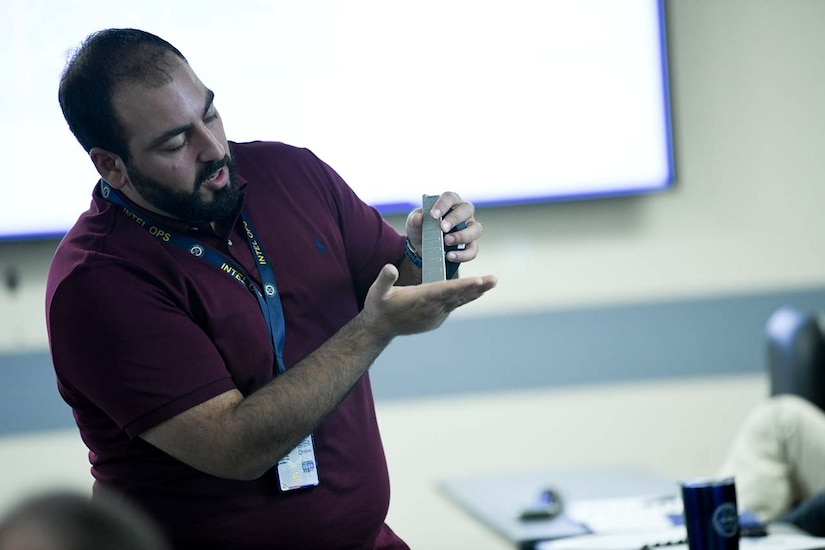
Imagine being able to create a tool from scratch or replace an integral piece of machinery in a few hours while also reducing production cost and material waste.
That’s possible now, thanks to NSWC PHD’s In-Service Engineering Agent of the Future (ISEAotF) team and Office of Technology (00T).
ISEAotF community members learned how NSWC PHD Additive Manufacturing (AM) experts are advancing the process during an AM Deep Dive within an ISEAotF training held recently.
Command AM Lead Armen Kvryan led the presentation and explained the disadvantages of traditional manufacturing.
“Traditional manufacturing is subtractive, requiring different tools to obtain a final product and resulting in excess waste materials,” he told the audience.
In comparison, additive manufacturing, Kvryan argues, allows for rapid concept development while resulting in less waste material and a decreased logistics footprint.
However, he explained, AM should be used selectively.
“You need to understand what you should and shouldn’t 3D print,” Kvryan said. “Don’t print inexpensive and readily available materials, such as a screw or a simple thin rod.”
AM’s other advantages are that it allows for more complex geometrics and design optimization and iteration. In addition, the metallic powder used in 3D metal printing is highly recyclable.
“The most important thing from a designer’s perspective is build size and layer height,” Kvryan said. “Going smaller in size increases production time but also increases the quality of the build.”
The biggest “material” problem currently facing 3D printing metals is fatigue strength, he said. More importantly, with metal 3D printing, the cost is the biggest hurdle. Typically speaking, metal 3D printing is best suited for small batch prototypes or legacy components where production of those parts would be difficult and/or expensive. He mentioned that as the technology increases, both the material cost and print time will go down, making it a more viable option for more components.
“3D printing is much faster but results in less structural durability than traditionally manufactured parts,” Kvryan said. “So, you have to design objects with this in mind, which might entail a re-design of the component.”
Because certain parts need these additional support structures, hollow sections are not commonly used in 3D metal printing as the support structures cannot be easily removed, he said. Instead, parts can be formed with skins and cores.
“These parts are so thin, they act hollow but you get the same properties (as a traditional hollow section),” Kvryan said. “Although, this introduces new problems as it creates more cavities for corrosion.”
PHD is acquiring a new dual-laser 3D printer, the Concept Laser M2, which will form more customized parts and print at a higher resolution.
“Faster production equals less resolution and quality,” Kvryan said. “For now, slower is better.”
While fatigue strength and corrosion issues aren’t as prevalent with 3D printed plastics, according to Kvryan, designers may have to contend with another issue that can affect the end product, known as warping—which occurs during the printing process when the edges of a plastic part lift and curve upward like the worn pages of a book.
“We have to be careful with warping, and the biggest reason is cooling rates,” he said. “On ships, the atmosphere is continuously changing which can cause warping.”
Kvryan said the goal is to give Sailors deployed at sea the same ability to 3D print as engineers have in labs on shore.
“There’s always a way to manipulate tools to work; that’s what materials science is,” Kvryan said. “Theoretically, anything that can be melted and cooled again into a solid can be 3D printed.”
"traditional" - Google News
March 27, 2020 at 04:40AM
https://ift.tt/2UmndzS
3D Printing Forges Transition From Traditional Casting To Additive Man - Naval Sea Systems Command
"traditional" - Google News
https://ift.tt/36u1SIt
Shoes Man Tutorial
Pos News Update
Meme Update
Korean Entertainment News
Japan News Update
Bagikan Berita Ini














0 Response to "3D Printing Forges Transition From Traditional Casting To Additive Man - Naval Sea Systems Command"
Post a Comment